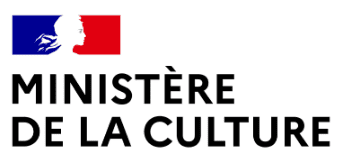Grodek: such is the name of one of the first mass slaughters to have occurred in the First World War, precisely in September 1914, between the Russian and Austro- Hungarian armies. Witness of the carnage after being enrolled as a nurse, Austrian poet Georg Trakl had tried to commit suicide so as to avoid hearing the screams of wounded soldiers, before he was to precociously pass away three months later, at age 27. Grodek was to be his last poem. Its very shortness makes it one of the most atrocious visions of war’s horrors. Devin Horan’s film is the outstanding cinematic translation of the poem’s red and black scream.“Yet silently there gather in the willow combe / Red clouds inhabited by an angry god, / Shed blood, and the chill of the moon; / All roads lead to black decay.” Instead of having us listen to the poem, the filmmaker transforms it into a blend of images, texts and music that render anew the dazzling density of Trakl’s verse. The articulation between cinema and painting draws an arc between two landscapes that are totally opposed, i.e. the pre-impressionist image of nature unspoilt as painted by Courbet and, on the other hand, the expressionist vision of a cosmos whose colours are saturated by violence and human passions, as painted by Nolde. Red and black: out of the devastated landscape emerges Trakl’s face, in a self-portrait painted with the same colours of blood and night. Red and black too, like the long shot of a setting sun vanishing into the clouds, as a voice is reading two texts, one by Dostoyevsky and the other by Bataille, both of which state that humanity is inevitably bound for self-destruction. The 1914 soldiers in trenches at the beginning are echoed, at the end of the cinepoem, by the horribly contemporary image of two dead soldiers in Ukraine, their faces onto the ground in a pool of blood. Spanning barely nine minutes, the film is the most salutary history lesson one may get.
(Cyril Neyrat)
- Flash Competition
- 2022
-
 Flash Competition
Flash Competition
- 2022
GRODEK
Devin Horan
Interview with Devin Horan
Your film is a revision – or “remake”, as you say – of a work you dedicated to the Austrian expressionist poet Georg Trakl. What made you return to this work and to Trakl’s poetic testament, Grodek?
In 2014, I finished a film on the subject of Trakl’s suicide. But it was an artistic failure and I destroyed all the files I could, not long after. It felt bad to have this gap in my filmography so I always wanted to correct my mistakes and make a better version of this film, one stripped down to its fundamental intentions. It took me a long time to have the right ideas of how to do that (if they are even right now).
Besides the reference to Trakl’s last poem, the writings of two other authors are quoted in the film, one taken from Fyodor Dostoevsky’s Crime and Punishment and the others from Georges Bataille’s L’Expérience Intérieure and Propositions (which appeared in an article published in the periodical Acéphale, “Nietzsche et les fascistes”). How did you choose these passages?
These are words that have lived with me for years and years. I think they are accurate visions of human behavior. I also wanted to use words of Paul Fussell from his book The Great War and Modern Memory: “Thus the drift of modern history domesticates the fantastic and normalizes the unspeakable. And the catastrophe that begins it is the Great War.” But they didn’t fit. “It is not I who is knocking – it is the entire Earth” are words that haunt me. Maybe the main character of the film is the Earth.
The film is articulated in thirteen images, weaving links between Gustave Courbet’s paintings Le Ruisseau du Puits-Noir and Vallée de la Loue, Emil Nolde’s painting Autumn Evening, Georg Trakl’s self-portrait, and a short extract from the film Killed by Lightning by Russian director Yevgeny Yufit, founder of Necrorealism. Could you tell us what ideas guided the editing?
After thinking about it since 2015, I finally made this film very quickly, in February and March of this year. There is a movement from day to twilight and night, and from idyll to nightmare. Somewhere in its arrangement, somehow, especially in the contrast between the Courbet and the Nolde, I hope resonate some words of JG Ballard: “The psychic landscapes and the terrestrial landscapes were now indistinguishable, as they had been at Auschwitz and Hiroshima, Golgotha and Gomorrah.” Yufit’s images of idiot humanoids wandering in fields and forests are some of the best things I’ve ever seen in cinema. The end of the film needed some kind of movement, so I sampled one of these images and was happy when it looked like a giant in the landscape. It reminded me of Goya’s Colossus. There is also a picture of my father in the jungle in Vietnam when he was nineteen years old.
After the credits, a final image emerges fleetingly from the darkness, mirroring the image of World War I soldiers that precedes the film’s title. How did this choice come about?
It was a wish to ground this film in the present. The war in Ukraine started while I was editing. There are more words by Fussell, or Fussell quoting Alfred Kazin: “War anywhere, anytime – War that has never ended, War as the continued experience of twentieth-century man.”
I was moved by this picture, the way faceless dead boys seem to be trying to cover themselves, the way they are weighed down by this heavy, robot-like gear. Their posture is human but the equipment feels so inhuman. It resonated with words in the poem Grodek about dying warriors, their broken mouths and bleeding heads. And the last words of that poem are “the unborn generations.”
The film also features music by Heinz Holliger and Karlheinz Stockhausen. Could you tell us how you worked on the construction of the soundtrack?
I’m a naïve listener. Stockhausen’s piece is called Nachtmusik, so that is the night section of the film, conveyed in music instead of image. I read that Holliger’s piece, Turm-Musik, was written after he had read biographies of mentally disturbed artists, and it is from a large cycle dedicated to Friedrich Hölderlin called Scardanelli Zyklus. Hölderlin wrote visions of decline (“gone are the gods, dead is the earth”) before Trakl, and they are strongly related. Then the final decision was how the musical pieces sounded with the images and I thought they sounded good. The fragment of Holliger over the film’s title sounded to me like a rainbow falling apart.
Interview by Marco Cipollini
-
 Flash Competition
Flash Competition
Technical sheet
Italy / 2022 / Colour / 10’
Original version : english
SSubtitles : french
Script : Devin Horan, Margherita Malerba.
Photography : Margherita Malerba
Editing : Devin Horan
Sound : Margherita Malerba, Johannes Bady
Production : Devin Horan (Maly Okot).
Filmography :
The Book of Hours, 2023
The Animals Are Sick With Love, 2022
Pages of Natural History, 2019
Akra, 2017
Late and Deep, 2011
Boundary, 2009.
- Autres films / Flash Competition






